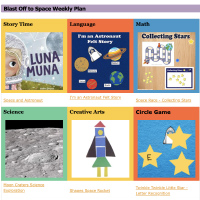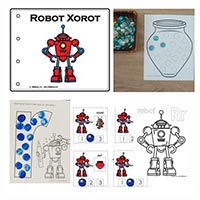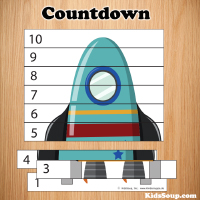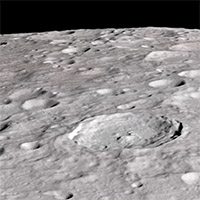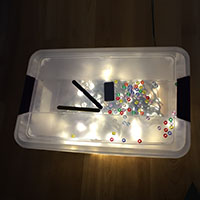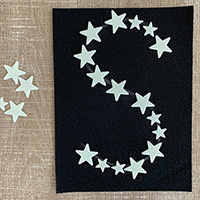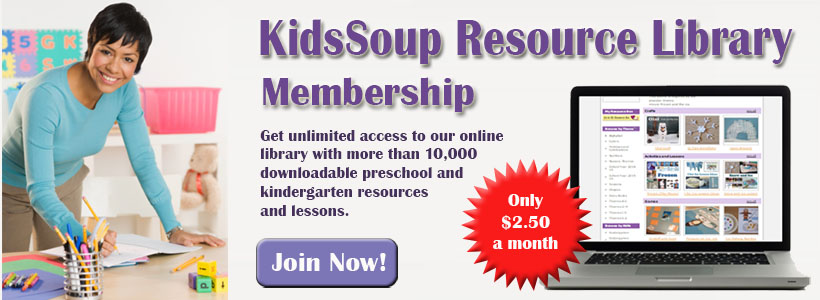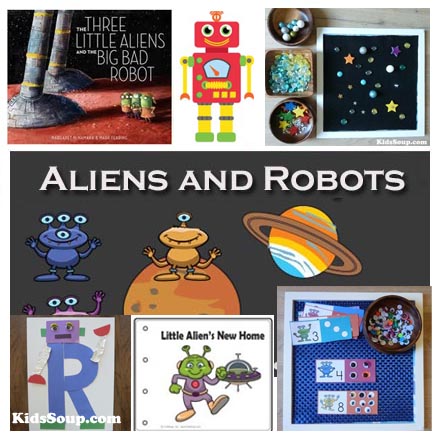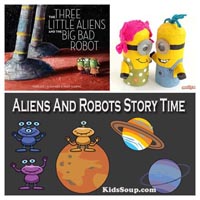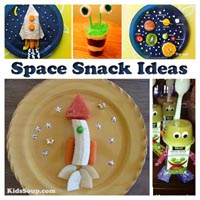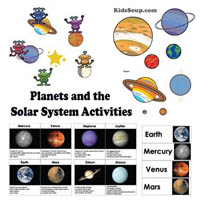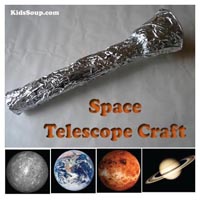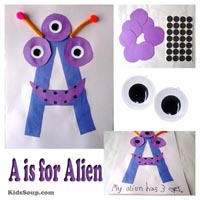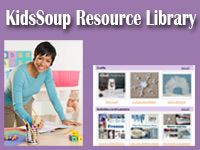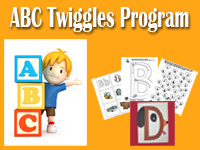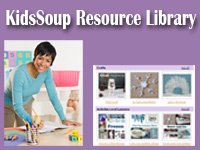Space and Astronauts Preschool Activities, Lessons, Games, and Printables
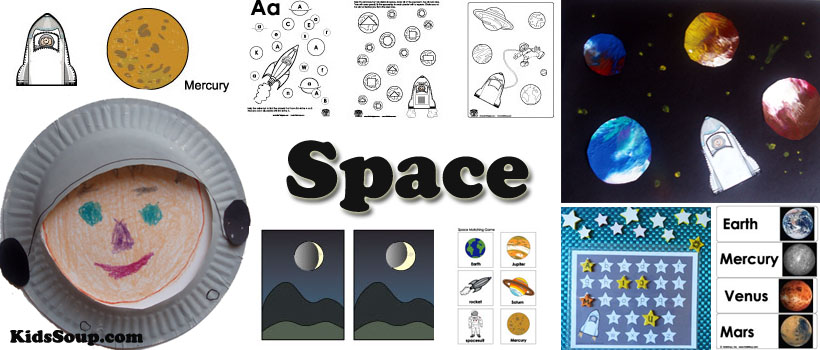
Space and astronaut preschool activities, games, and worksheets. Have you ever looked at the night sky and wondered, "What else is out there?" Space exploration is a natural extension of human curiousity. People want to know what is outside their world. The Universe is everything that exists. The Earth is part of the Universe. So are the Sun, the Moon, and all the planets. Your children will have an opportunity to satisfy some of their curiousity as they learn and explore about space travel, astronauts, planets, stars, the Moon, the Sun, and our Solar System with our space crafts, activities, felt stories, rhymes, songs, games, and printables.
Samples of our more than 80 Space preschool and kindergarten crafts, activities, and games available in our KidsSoup Resource Library:
Crafts
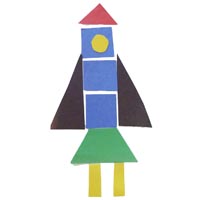
Shapes Space Rocket
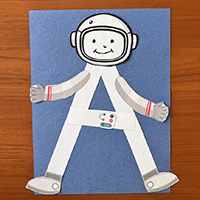
A Is for Astronaut Letter Craft
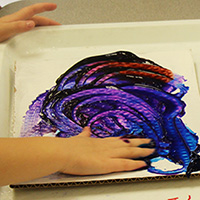
Space Name Art
Activities and Lessons
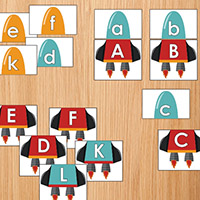
ABC Rockets - Letter Matching
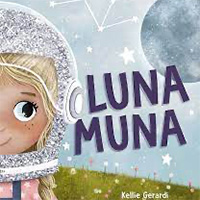
Astronaut and Space - Story Time
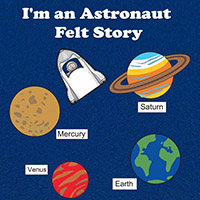
I'm an Astronaut - Felt Story
Math
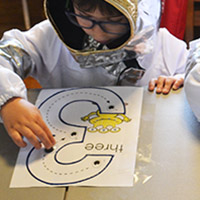
Alien Eyes - Numbers Pre-writing
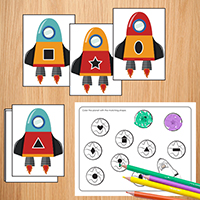
Planets Shapes Matching Game
Science and Exploration

Astronaut and Space - Story Time
Games
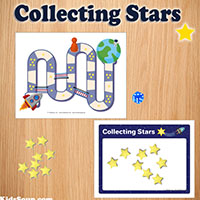
Space Race - Collecting Stars
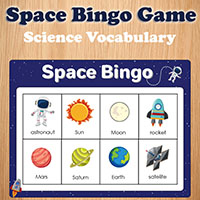
Space Bingo
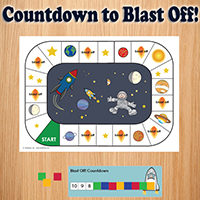
Blast Off – Counting Backwards 10-1
Movement
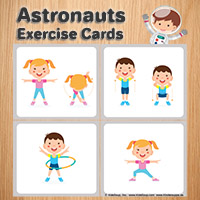
Astronauts Exercise Cards and Activity
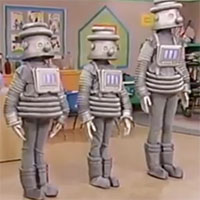
I'm a Little Robot - Song and Movement
Booklets and Other
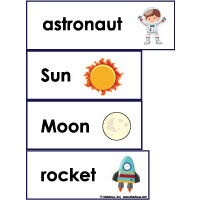
Space and Astronaut Word Wall
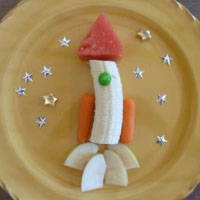
Space Food and Space Pudding
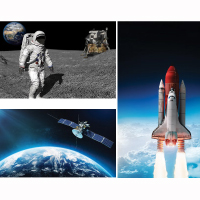
Space Posters
Worksheets
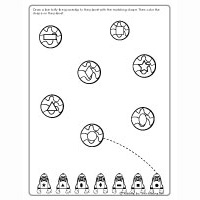
Spaceship and Planets Shapes Matching
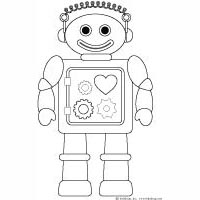
Robot Coloring Page
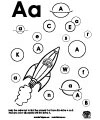
Letter A, Astronaut
Twiggle Books
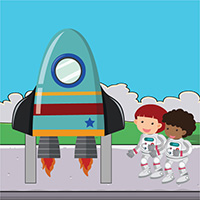
Two Astronauts Are Ready to Soar - Twiggle Story
Free Space Crafts, Astronaut Crafts, Activities, and Printables
Children love to learn about space, astronauts, spaceships, and planets. Here are some lesson plan ideas:
The Earth (Day and Night)
The Sun
The Moon
Spaceships and Austronauts
Planets and Stars
Space Learning Center Ideas
Dramatic Play Area
Place different hats, flannel shirts, and pants inside the dramatic play area. Let children dress up as a scarecrow and stand on one leg.
Block Center
Add some egg cartons and small bowls and a large white bed sheet together with spaceships, astronaut figures, and alien toys. Let children make craters with the egg cartons and bowls and cover it with the white sheet to make the moon's surface.
Small World Play Area
On the Moon. Make some moon sand and place inside a large flat container. Add some astronaut and spaceship toys and some rocks. Let children create craters with the sand.
Fine Motor Skills
Show children a picture of the moon's surface. Provide some white and a little bit of black play dough. Let children mix the two colors together and roll it into a ball. Then flatten it. Invite children to create some craters to their moon surface.
Our Earth and Day and Night Preschool Activities and Games (Activities and printables are available inside our KidsSoup Resource Library)
The Earth
Ask children if they know the name of the planet we live on. Explain that the Earth is the third planet from the sun in our solar system. Show a solar system poster. Let children find Earth.
Make an earth craft.
Day and Night (Science, Oral Language)
Show children a globe. Find your state on the globe and shine a flashlight on it. Explain that the flashlight is the sun and when the earth faces the sun where we live, it's daytime. Explain that the Earth rotate around its axis once in a day. Let one child hold the flashlight and slowly turn the globe until your state is at the opposite of the ligth. Explain that when the earth rotates away from the sun, it will get darker and darker and it becomes nighttime. Write the words Night and Day on the board. Ask children which kind of activities they do in each daytime. What kind of things can they see in the day or in the night. Write the answers on the board.
Drawing and Writing Activity
Let children fold a piece of paper in half. Let them copy and write the words "Night" and "Day" to the top. Encourage children to draw and write about the things they do and see in the different daytimes.
Movement Activity
Glue a sun and a moon to a craft stick. Hold up the moon and ask children what time of day we see the moon. Then let children pretend to be sleeping. Next, ring a little bell and show the sun. Let children slowly wake and walk around. After a while hold up the moon again. Repeat a couple of times.
Make a Day and Night Sky Mural
Place a large mural paper on the wall. Divide the paper in to two sections and label the sections with "Night" and "Day." One day let children paint the night sky gray and black. The next day let them paint the night sky with blue paint. Over the next few days, let children draw, paint, and cut out their artworks and glue them to the matching sky.
Day and Night Critters
Talk about the animals that are active during the day and the animals that sleep during the day.
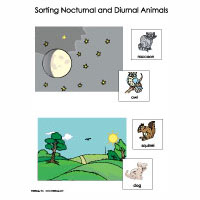
Preschool Activities:
The Sun Preschool Activities and Games
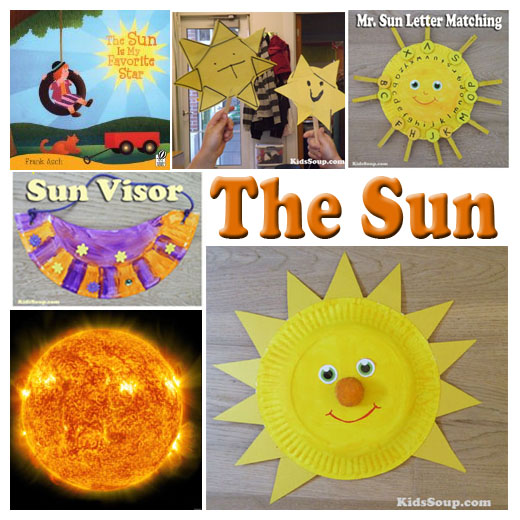
Preschool Activities:
The Sun
Show children a poster of the sun. Explain that the sun is a star, that is, a sphere of hot, glowing gases. Ask children what they feel and see when it's a sunny day. The air gets warmer, wet streets dry, etc. Ask children if the sun's rays fall to Earth like rain. Explain that the sun shines on the Earth giving off light and heat. Sing the weather song:
(Tune: The Bear Went Over the Mountain)
The sun shines on the rooftop,
the rooftop, the rooftop.
The sun shines on the rooftop
on a sunny day.
Invite children to name something else the sun shines on and repeat the song with these substitutions.
Sun and Moon Craft
Cut out a moon and a sun shape out of card stock paper. Let children decorate the sun with yellow and orange tissue paper and the moon with white and gray tissue paper.
Make a Sun Catcher Craft
The Moon Preschool Activities and Games
The Moon
The moon lies some 384,400 kilometers from Earth. It has many mountains, valleys, old volcanoes, and many craters. The moon is great to explore because it can be seen it without a telescope or binoculars. Recite moon rhyme and ask children to imagine the different faces of the moon. Explain that it seems that the moon changes shape. This is because, as it orbits Earth, different parts of the moon facing us are lit up by the sun's light. Moon "phases" occur when Earth blocks some, or all of the sunlight that reflects from the moon's surface.
Rhyme:
Play a game with me, Mr. Moon.
Can you look like a white balloon?
Can you hide half of your face
and move around high up in space?
Can you look like a smile on its side?
I can't see you where do you hide.
Show the different moon phases using the moon chart. Have children place the phases in order.
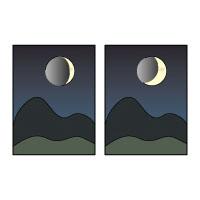
Preschool Activities:
Moon Rocks
Go outside and collect some rocks. Let children color and decorate the rocks with paint and glitter glue.
Spaceships and Austronauts Activities and Games
Astronauts
Astronauts travel to space to collect information for scientist to study. Astronauts sometimes also have to fix spacecrafts once they're in space. Living in space is very different from living on Earth. Here on Earth we are surrounded by air, but there is no air in space, which is why astronauts need to wear spacesuits and helmets. Also in space nothing has weight and you need to wear a spacesuit to go outside the spaceship. (Craft: Astronaut Helmet)
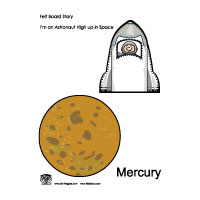
Preschool Activities:
Astronaut Finger Rhyme
Four Little Astronauts
Four little astronauts winking at me, (Hold up fingers as rhyme indicates.)
One blasts off, now there are three.
Three little astronauts with nothing to do,
One blasts off, now there are two.
Two little astronauts afraid of the Sun,
One blasts off, now there is one.
One little astronaut alone is no fun,
He blasts off, now there are none.
The Spacesuit
Spacesuits are very bulky and very thick. They protect the astronaut from the sun's heat and the cold. The spacesuit has a backpack that contains air to breathe. The helmet has a dark visor to shield the astronaut from the sun's glare. The space shoes are heavy help to the astronaut to walk on the moon. (Make our sponge space shoes.)
Living in Space
Astronauts sleep in sleeping bags that hold them down, so that they do not float away while they're sleeping. Eating and drinking is tricky in space. You can't drink from a cup because liquid won't stay and will float around. Astronauts drink through a straw from a plastic pack, and space food is sticky so it sticks to the plates. (Snack idea: Make some space drinks using plastic bags and drinking straws.)
Satellites
Satellites are spacecrafts that we have sent to space to collect information from a planet and radio them back to Earth. We also use satellites to beam information and TV programs around the world.
Rockets
We use rockets to carry astronauts and things into space. Rockets are the only engines that can give enough power and speed to get the spacecraft into space. The fuel burning in the engine rushes out of the nozzle and pushes the rocket forward. Just like if you blow a wrapper from a straw. (See our straw rocket activity to explain and experience the science behind it.)
The Space Shuttle
The space shuttle can lift off into space just like a rocket and then come back to Earth like a huge glider. When the shuttle returns to Earth through the atmosphere, it gets very hot. Special tiles protect the spaceship from the heat so that it doesn?t burn up and can be used again for the next space flight. (Craft: Make a shuttle glider.)
Planets and Stars Activities and Games
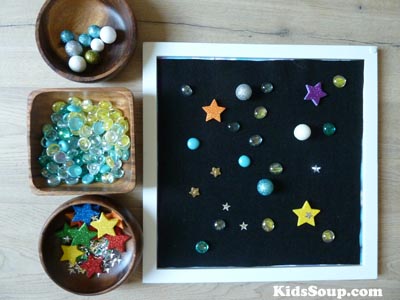
Preschool Activities:
Model Clay Planets
Mix two colors of model clay together. Stop mixing when you get a marbled look. For texture, poke and shape the surface with a craft stick, plastic fork, or pencil.
Planets Word Wall Cards
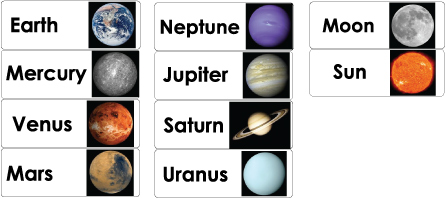
Preschool Activities:
Star or Planet Suncatcher
Form a pipe cleaner into a star or planet. Press it flat on a piece of parchment paper or plastic. Pour some white glue into a paper cup and add a few drops of paint. Mix with a craft stick. Pour the mixture into the form and sprinkle some glitter on it. Let it dry clear at least 24 hours. Gently pull the form from the paper or plastic and attach a ribbon or yarn to make a hanger.
Constellation Art
Place star stickers on a piece of black paper. Have children connect the stars with a white crayon to make their own constellation. What does it look like. Give your constellation a name.
Aliens and Robots Activities and Games
Free Space Coloring Pages and Worksheets
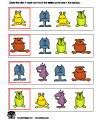 |
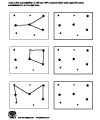 |
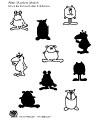 |
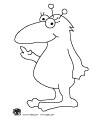 |
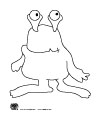 |
| Alien Coloring Page |
Space resources:
Other space related KidsSoup preschool and kindergarten activities and themes:
Our Products
Education - This is a contributing Drupal Theme
Design by WeebPal.
Design by WeebPal.


